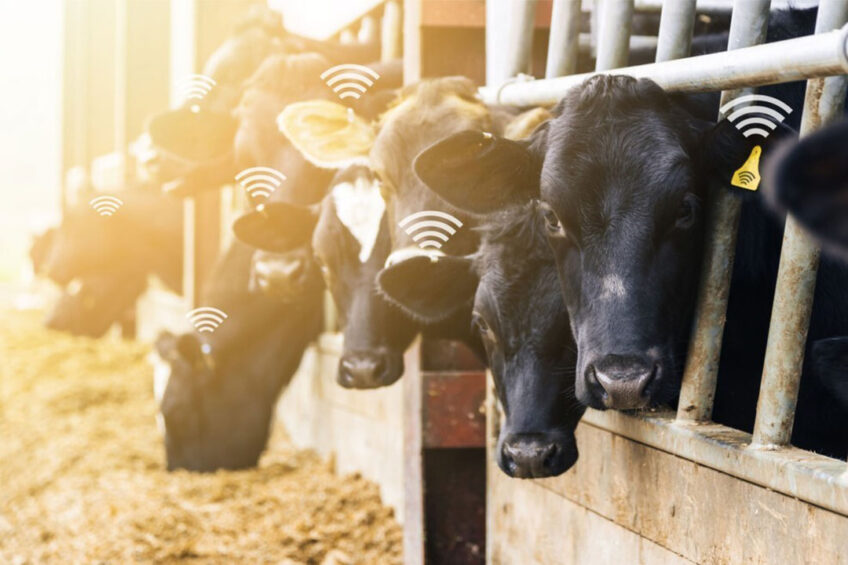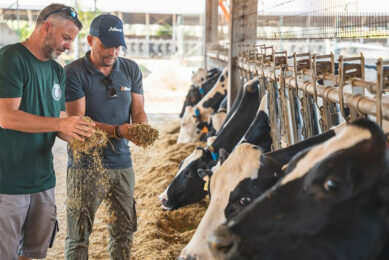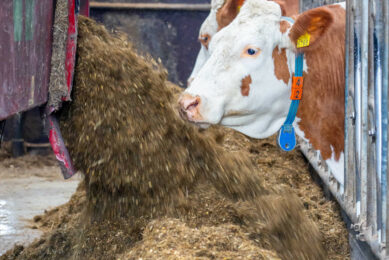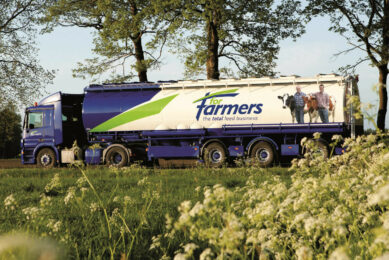Reviewing the power of robotics in the dairy industry

Tens of thousands of robotic milking systems operate each day throughout the world’s dairy production units, but robots, artificial intelligence, and machine learning aren’t limited to parlours.
Their boundaries include feeding, diet and ration preparation, manure handling, behaviour monitoring, animal movements, genomic testing and others.
“If dairy producers haven’t yet embraced these types of technologies, it’s important they at least explore them to help with labour, efficiency, data collection and the overall sustainability of the industry,” says Brad Heins, professor of dairy management at the University of Minnesota.
Options for dairy farmers
He explains plenty of tech options exist for new and established farmers. Rumination sensors and ear tag monitoring have seen an uptick in use as they advance in capabilities. Feeding behaviour, dry matter intake and efficiency are predicted with added certainty as individual data becomes available.
Heins says feed pushers are becoming more common especially in robotic milking operations. Manure scrapers are also present although they’re still rather expensive and farms may need to adapt their manure handling methods to make them financially worthwhile.
“One piece of equipment gaining popularity is the automated TMR feeder,” Heins comments. “It’s kind of a pusher and feeder in the same machine. Cows can be fed 10, 12, or as many times a day as required. For those with a manual labour shortage, a programmable robotic TMR could handle this task.”
Genomics and methane reduction
“I consider genomics helping to find additional information and data a precision technology as well,” Heins says. “The sky’s the limit with it, not only from a production and milk quality standpoint but also in relation to health and fertility. It’s only going to grow in our industry.”
By using genomic sampling and testing information, producers can identify feed efficient animals and eventually create a bigger dent in methane emissions.
“We already have feeding systems measuring an individual’s methane levels. They’re not likely in commercial dairy operations yet, but in the future, especially for those using robotic milking, a type of methane detector will be offered.”
Robotics – seeing into the future
Stephanie Ward, assistant professor in the Department of Animal Science at North Carolina State University says there’s a large amount of robotics and machine learning in development, although not yet commercially accessible where machine learning (MCL) technology is concerned.
“This is an area companies such as John Deere and DigiStar are looking at hard,” she states. “Other start-ups like iYOTAH are working to bring together data points that could be used in MCL models to help with decision making and management strategy.”
Automated/robotic calf feeding units have seen a slow rise in adoption as most require a reversion back to group housing which research shows to be socially beneficial but challenging from a disease management perspective. DeLaval has also recently developed an overhead robotic process to deliver milk to calves in individual hutches.
While not necessarily new, real time near infrared (NIR) is offered on loading and mixing equipment having hit the market several years ago with a hefty price tag.
“I think accuracy of the NIR has improved and technology has become more economical – the ability to know where our ration is on dry matter and protein in real time pays off in the end,” she says.
Labour and environment angles
Ward says robotic milking has already reduced labour requirements in the parlour, allowing workers to be utilised in other areas or in a more efficient and skilled way.
“Strangely, folks aren’t lining up to milk cows at 3 am,” she laughs. “Those that do want to be paid beyond what current milk prices will support. So, purely from a labour standpoint, technology will help keep farms in business.”
“If we can connect the field to the feed bunk, we can have a serious impact on nutrient cycling.
She says from an environmental perspective, anything done to reduce nutrient waste and close the cycle (i.e., less feed waste) will improve sustainability. For example, the HarvestLab 3000 from John Deere detects nitrogen and phosphorus concentrations in spread manure but also crude protein and phosphorus in chopped silage.
“If we can connect the field to the feed bunk, we can have a serious impact on nutrient cycling,” she states.
When considering the importance of moving feed systems in a more technologically advanced direction, Ward answers both ‘yes’ and ‘no’.
“We can’t completely remove humans from the approach,” she stresses. “We can eliminate many of their errors such as too long or short mixing times, inaccurate mixing, or bad math calculations, thereby increasing efficiency and sustainability, but there’s no real replacement for having eyes on cows.”
She outlines how cattle will likely adapt well to less human interaction, but processes such as breeding shouldn’t be exclusively technology based.
“Unless the dairy industry decides to return to predominantly bull breeding, we will continue to need arms in cows.”
She believes there’s room for improvement where feeding is concerned, but technology will help. Collecting real-time intake data, for example through feed management software and comparing it to milk yields and feeding times daily, will give farmers and their nutritionists better records from which to make decisions.
Safe and secure data for consistency
She likes to relay 2 primary benefits of advancing technologies when speaking with farmers. First, accumulating ‘system’ data to provide better tracking of feed inventory and waste points. “A more advanced robotic program including mixing and delivery will eventually give farmers the ability to act and react when issues arise, without physically being present. If farmers don’t have to be ‘married’ to the farm 24/7, we may have some young folks come back…which is a desperate need.”
Secondly, cows love consistency. When staff arrive an hour late for work, cows get fed an hour late. Or when the feed preparation worker takes a phone call while mixing, particle size changes in the ration, which leads to ruminal health problems.
“It’s guaranteed someone didn’t get the same feed they got yesterday. All this can be addressed with robotics having MCL and other data collection alerting farmers when they’re causing issues.”
Addressing potential drawbacks, Ward pinpoints cost plus a hesitation to trust their abilities, mostly due to a lack of understanding or being intimidated by their supposed complexities.
She’s even heard, ‘I’m from the government and we’re here to help’ type comments or those not wanting ‘Big Brother’ in their day-to-day business.
“That’s a legitimate problem and must be addressed. Data security – who owns and has access to it? Some areas of Europe are already using data from technologies to inform legislation and policy on animal handling and farming practices. We must ensure the science is trusted before this happens globally. Data doesn’t lie, but it can be manipulated. It’s either a powerful tool or weapon.”
Join 13,000+ subscribers
Subscribe to our newsletter to stay updated about all the need-to-know content in the dairy sector, two times a week.










